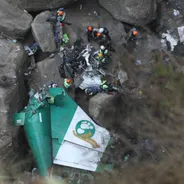The hole in Earth's ozone layer above Antarctica is continuing its recovery, leading to changes in atmospheric circulation, a study published on Nature.com has revealed.
Per New Scientist, Antara Banerjee and colleagues used data from satellite observations and climate simulations to model changing wind patterns that are related to the recovery of the ozone layer.
This time lapse shows a reduction of pollution in Italy amid the coronavirus pandemic:The EPA describes the protection the ozone layer gives us thus;
"The ozone layer in the stratosphere absorbs a portion of the radiation from the sun, preventing it from reaching the planet's surface. Most importantly, it absorbs the portion of UV light called UVB. UVB has been linked to many harmful effects, including skin cancers, cataracts, and harm to some crops and marine life."
New Scientist reports that the healing of the ozone layer is largely due to the Montreal Protocol that was agreed internationally in 1987, which halted the production of ozone-depleting substances.
Banerjee said of the findings;
"This study adds to growing evidence showing the profound effectiveness of the Montreal Protocol. Not only has the treaty spurred healing of the ozone layer, it's also driving recent changes in Southern Hemisphere air circulation patterns."

"The challenge in this study was proving our hypothesis that ozone recovery is in fact driving these atmospheric circulation changes and it isn't just a coincidence." she added.
John Fyfe, a co-author of the paper, said;
"Identifying the ozone-driven pause in circulation trends in real-world observations confirms, for the first time, what the scientific ozone community has long predicted from theory."
And Martyn Chipperfield of the University of Leeds in the United Kingdom, who was not involved with the study, said that the findings represented the next step - that of seeing the effects of the layer's recovery on the climate.
Despite the ban on ozone-depleting subtances, such substances last an awfully long time in the atmosphere, thus a complete ozone recovery is not anticipated for several decades.












